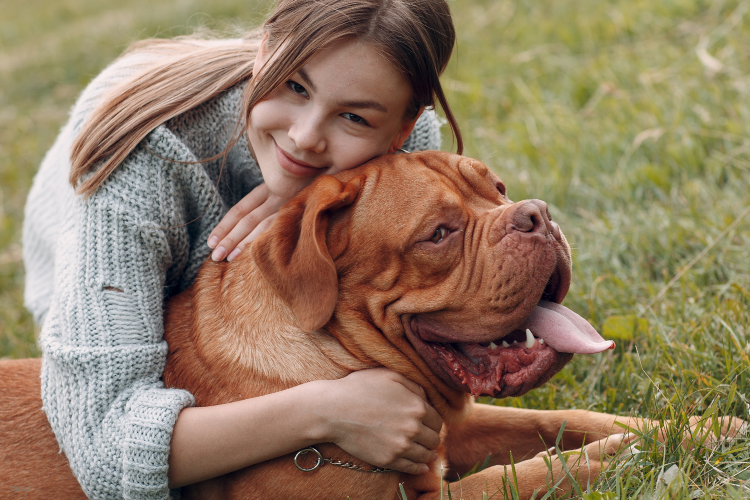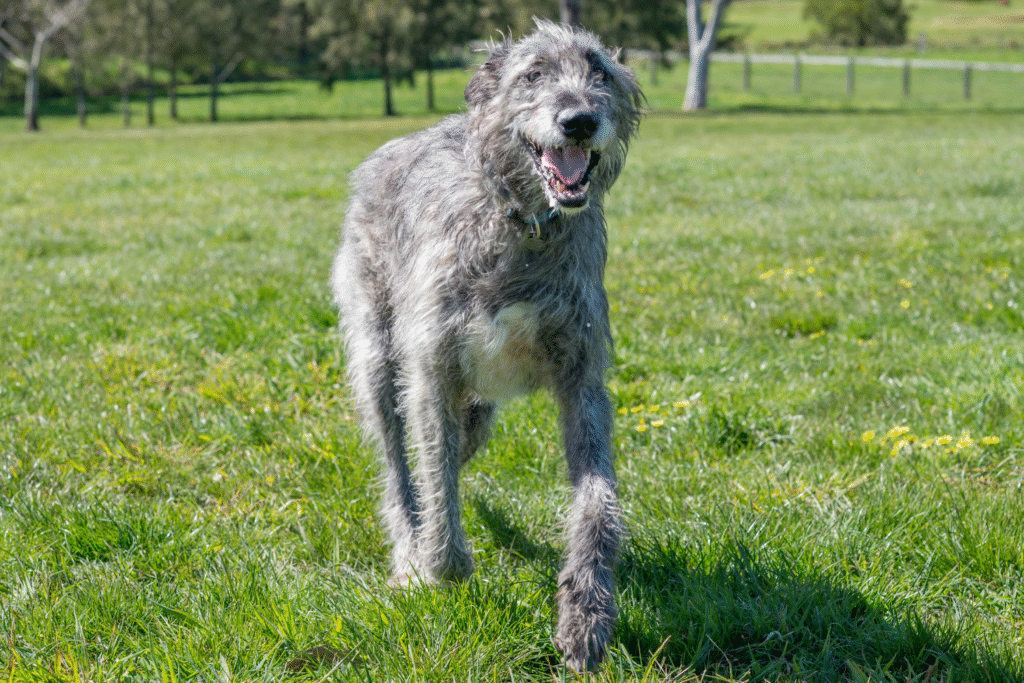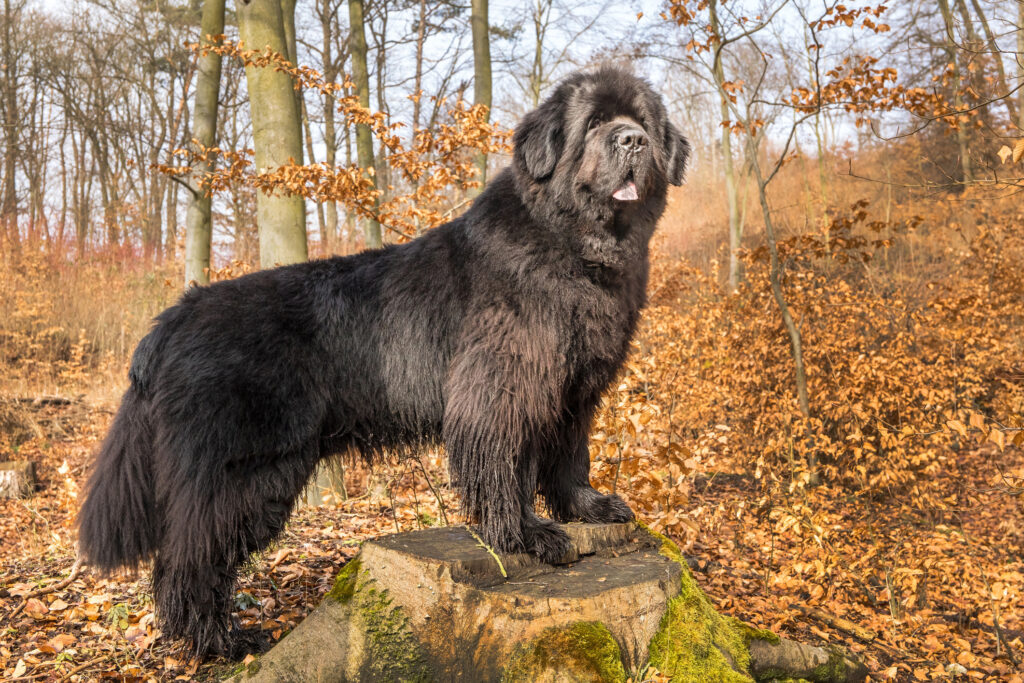Some beloved breeds live fast and fade too soon.

People often choose dogs for personality, beauty, or companionship without realizing that some breeds simply don’t live long lives. Genetics, size, and inherited health conditions all play a major role in determining how long a dog might be around. The truth can be difficult to face, especially for those who love large or distinctive breeds, but awareness helps owners provide the best quality of life possible. Here are twelve breeds that tend to live shorter lives, and the key reasons behind their early passing.
1. The Irish Wolfhound lives only around six to eight years.

Known for its grace and quiet nature, the Irish Wolfhound often breaks hearts with its short lifespan. According to data reported by the American Kennel Club, these giants typically live just six to eight years due to heart disease, bone cancer, and bloat. Their size accelerates aging, placing extra stress on vital organs. Despite that, their gentle spirit leaves a lasting impression on anyone lucky enough to share those precious years with them.
2. The Great Dane rarely lives beyond eight to ten years.

Great Danes have an unmatched presence, yet their size is both their gift and their burden. They suffer from skeletal and cardiac issues that often limit longevity, as stated by the Veterinary Centers of America. Their frames grow fast, their hearts work overtime, and age seems to arrive early. For all their elegance and loyalty, they are reminders that big love sometimes comes with a shorter timeline.
3. The English Bulldog often faces life-shortening respiratory issues.

The Bulldog’s adorable face conceals a range of health struggles. Studies reported by the Royal Veterinary College found that brachycephalic breeds like Bulldogs face shorter lives due to airway obstruction, skin infections, and overheating. Their compact skull structure restricts breathing and oxygen levels. Owners adore their personality, but the physical design that makes them so iconic also limits their time.
4. The Bernese Mountain Dog loses years to genetic cancers.

Beneath that affectionate personality and tri-colored coat lies a genetic tendency toward aggressive cancers such as histiocytic sarcoma. Bernese Mountain Dogs have one of the highest cancer rates among all breeds. Even with excellent care, many live fewer than nine years. The contrast between their sweet, soulful demeanor and their fragile health is especially heartbreaking.
5. The Saint Bernard’s massive frame shortens its lifespan.

The same bulk that makes Saint Bernards so huggable also leads to orthopedic strain, bloat, and heart issues. Their bodies age fast, and joint degeneration sets in early. On average, they live eight to ten years. Though their time may be short, their calm devotion leaves an impact that lasts far beyond their years.
6. The Dogue de Bordeaux often passes away before age eight.

This powerful breed, famous for its loyalty, is one of the shortest-lived dogs on record. The Dogue de Bordeaux averages just five to eight years of life. Heart disease, cancer, and breathing problems combine with size-related stress to reduce longevity. Those who love them often describe every year with them as worth two of any other.
7. The Leonberger is strong but rarely reaches ten years.

This gentle giant has a soft temperament and a tragic lifespan. Many Leonbergers die between eight and nine years old due to bone cancer and cardiac disease. Their size, again, works against them. Their loving personalities make the time together meaningful but fleeting, a pattern familiar to large-dog owners worldwide.
8. The Mastiff grows old before its time.

Among the most imposing breeds, the Mastiff often lives only six to eight years. The heart, joints, and digestive system bear enormous strain. Their short lives reflect the toll that weight and genetics take on such a powerful physique. Owners quickly learn to treasure their gentle calm while it lasts.
9. The Rottweiler often succumbs to cancer at a young age.

Rottweilers typically live between eight and ten years, with cancer as their leading cause of death. They are sturdy and loyal but genetically predisposed to bone and soft-tissue cancers. Even with proactive care, many develop health issues early. Their bravery and devotion make their shorter lives feel especially unfair.
10. The Newfoundland faces heart and joint complications early.

Big, affectionate, and built for cold water, Newfoundlands are prone to heart disease, hip dysplasia, and bloat. These conditions combine to shorten their lifespan to around nine or ten years. Their easygoing nature makes them beloved family dogs, but their bodies struggle to sustain that large, gentle frame long-term.
11. The Boxer frequently dies young from genetic heart disease.

Despite their athletic build and playful attitude, Boxers often face arrhythmogenic right ventricular cardiomyopathy, a fatal heart condition. They’re also vulnerable to cancers that appear early in life. Studies place their average lifespan at around nine years. They burn brightly, full of affection and energy, before fading too soon.
12. The Shar Pei’s unique skin hides serious internal risks.

Behind the wrinkles that make the Shar Pei so distinct lies a breed prone to fevers, skin infections, and a hereditary kidney disease called amyloidosis. Many live fewer than ten years, with recurring medical complications throughout life. They are striking, loyal, and complex—dogs whose health demands attention from the very start.
